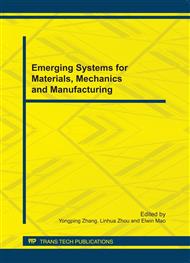p.532
p.537
p.541
p.547
p.551
p.557
p.561
p.567
p.571
Numerical Simulation of High Velocity Waterjet Characteristics and Impact Pressure
Abstract:
This paper presents a numerical simulation approach to analyze high velocity waterjet characteristics and impact pressure. For the complexity of waterjet formation in air, multiphase mixture flow model is used, and the simulation is performed in FLUNET software. The simulation includes the hydrodynamic characteristics and pressure distribution of high velocity waterjet in air. The decay of pressure at different distance along centerline under different pump pressure is analyzed and the length of the initial region of waterjet is determined. In addition, the impact pressure of waterjet at different stand-off distance is also simulated, and the impact pressure distribution and its changing tendency with the stand-off distance are obtained. This paper provides theoretical parameters for waterjet incremental sheet metal forming.
Info:
Periodical:
Pages:
551-556
Citation:
Online since:
October 2011
Authors:
Price:
Сopyright:
© 2012 Trans Tech Publications Ltd. All Rights Reserved
Share:
Citation:


